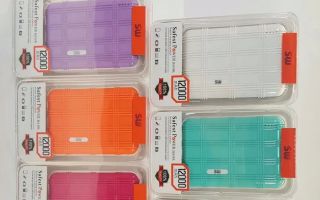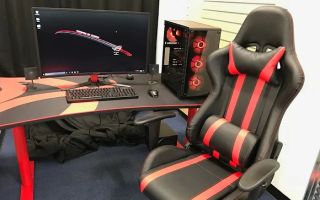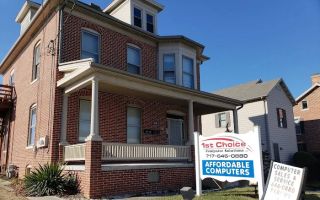How to Configure BIOS Settings to Boot from USB on HP Laptops and Desktops
- 1. Understanding BIOS Settings for Booting from USB
- 2. Why You Might Need to Boot from USB on HP Devices
- 3. Preparing Your USB Drive for Booting
- 4. How to Access BIOS on HP Laptops and Desktops
- 5. Adjusting BIOS Settings to Boot from USB
- 6. Common Issues and Troubleshooting BIOS Boot from USB on HP
- 7. Why Consider Using Ninja Stik for USB Booting
1. Understanding BIOS Settings for Booting from USB
The BIOS (Basic Input/Output System) is a crucial part of your HP computer’s startup process. It tells the system what hardware to check for and how to load an operating system. When you want to boot from a USB drive, you must ensure that your BIOS is configured to recognize and prioritize booting from external devices like USB drives. This article walks you through the process step by step.

Action Computers Inc. -- Denver Location
2890 S Colorado Blvd F, Denver, CO 80222, USA
1.1 What Does BIOS Do?
BIOS is responsible for initializing the hardware components of your computer, such as the hard drive, memory, and display, and it ensures everything is working before loading the operating system. Without adjusting BIOS settings, your HP computer will default to booting from the internal hard drive or SSD.
2. Why You Might Need to Boot from USB on HP Devices
There are several scenarios in which booting from USB on your HP laptop or desktop can be extremely useful. Let’s take a look at a few:
2.1 Installing or Reinstalling Windows
If you're setting up a new HP device or reinstalling Windows due to a system failure, using a bootable USB drive is one of the quickest and most efficient ways to install the operating system.
2.2 Running System Diagnostics or Recovery
In case of operating system failure or corruption, you may need to boot from a recovery USB drive to restore your system from a backup or run diagnostic tools to troubleshoot the issue.
2.3 Using Live Operating Systems
Booting from USB allows you to run operating systems like Linux directly from the USB drive, without installing it on the computer. This can be helpful for testing or accessing files from an infected or corrupted Windows system.
3. Preparing Your USB Drive for Booting
Before you can boot your HP device from a USB drive, you’ll need to ensure that the USB drive is properly prepared and contains the necessary bootable software.
3.1 Choosing the Right USB Drive
Select a USB drive with a capacity of at least 8GB for Windows installation or recovery purposes. A USB 3.0 drive will offer faster data transfer speeds compared to USB 2.0.
3.2 Making the USB Drive Bootable
To make your USB drive bootable, you can use tools like the Windows Media Creation Tool or third-party utilities like Rufus. Simply select the USB drive, choose the desired ISO file (e.g., Windows installation or recovery), and follow the prompts to create a bootable USB drive.
4. How to Access BIOS on HP Laptops and Desktops
Accessing the BIOS on your HP device is easy, but timing is crucial. Here's how to do it:
4.1 Powering Off Your HP Device
Shut down your HP laptop or desktop completely. Ensure it is powered off before proceeding.
4.2 Pressing the BIOS Access Key
As you power your device back on, immediately press the ESC key (for most HP devices) or F10 to access the BIOS menu. If your device doesn't boot into the BIOS, restart it and try again.
4.3 Navigating the BIOS Menu
Once inside the BIOS menu, you’ll see a list of options for hardware configuration, boot settings, and more. Use the arrow keys to navigate through the menu.
5. Adjusting BIOS Settings to Boot from USB
Now that you’ve accessed the BIOS, the next step is to configure it so that the computer can boot from the USB drive.
5.1 Changing Boot Order
In the BIOS menu, look for the Boot or Boot Order section. You'll need to set the USB drive as the first boot option. Use the arrow keys to move your USB drive to the top of the boot order list.
5.2 Enabling Legacy Boot (If Necessary)
If your HP device doesn’t recognize the USB drive as a boot option, try enabling Legacy Boot or UEFI Boot in the BIOS settings, depending on your device and the type of USB drive you’re using.
5.3 Saving and Exiting BIOS
Once you’ve adjusted the boot order and any necessary settings, save your changes by pressing F10 (or the key specified on your device) and confirm the changes. The computer will restart.
6. Common Issues and Troubleshooting BIOS Boot from USB on HP
Sometimes, even after adjusting the BIOS, you may encounter issues when trying to boot from a USB drive. Here are some common problems and their solutions:
6.1 USB Drive Not Recognized
If your USB drive doesn’t appear in the boot menu, ensure it’s correctly formatted and contains bootable files. You may also need to enable “USB Boot” in the BIOS settings.
6.2 Boot Order Not Saving
If your BIOS settings don’t save after reboot, try resetting your BIOS settings to default and repeating the process. In some cases, a BIOS update may be required.
6.3 Incompatible USB Format
Ensure your USB drive is formatted in a way that’s compatible with your HP device (either FAT32 or NTFS for Windows installation). If needed, reformat the USB drive using Disk Management or third-party software.
7. Why Consider Using Ninja Stik for USB Booting
If you find yourself frequently booting from USB drives on your HP device, using a dedicated product like Ninja Stik can streamline the process.
7.1 Convenience and Speed
The Ninja Stik is a reliable, pre-configured USB boot device that saves you time and effort. It’s fast, easy to use, and eliminates the need for complex setup steps each time you need to boot from USB.
7.2 Secure and Reliable
Unlike generic USB drives, the Ninja Stik is designed for longevity and reliability, ensuring that your boot operations run smoothly without unexpected errors or data loss.
Interested in getting your hands on Ninja Stik? Click here to visit Ninja Stik's website and discover more about this incredible USB boot solution for HP and other devices.




























